2020
“Przekłady Literatur Słowiańskich”. Vol 10 No 2 (2020)
Bibliography of Translations of Slavic Literatures (2018) Rozwiń
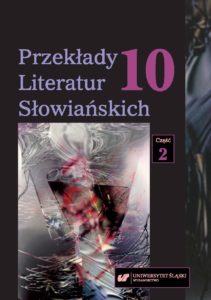
See entire issue:
“Przekłady Literatur Słowiańskich”. Vol 10 No 1 (2020)
Translation and Peripheries Rozwiń
In Volume 10, Part 1, we publish articles collected from the conference “Peripheries and Translation”, held in Ustroń from 11 to 13 October, 2018. Interest in the category of peripherality is, on the one hand, a consequence of the postmodern crisis of grand narratives; on the other, it has a certain amount of ubiquity, because peripheral phenomena (left unexplored or unperceived in culture) have attracted writers and artists of every epoch. The authors of the articles here examine the problem from a number of perspectives and research positions, and the material under scrutiny is varied in terms of language. Among the topics they address are: experiment in translation; translation from one of the Slovakian dialects into the standard language; Polish-mediated translations of English and Russian literatures into the regional language of Kashubian; the problem of the Polish reception of Old Serbian literature; the possibility of translating into a third language the peculiar dialogue among Canadian poets in French and English; the potential of translating creative literature from Polish into English; relationships between a writer’s own work and translations, drawing from the example of two cases removed from each other in time and space; translation of gay novels and the rhetorical figure of the onomatopoeia; the problem of minor literature and of “literature from cultural periphery” which has found its way into literary salons [higher spheres]; Polish reception of Czech structuralist thought; translation as a form of promotion, and what happens when a flawed translation becomes a success. Among the authors (some appearing here in a double role, as author of both the original work and the translation) whose work’s translations have been examined are Adam Mickiewicz, Wisława Szymborska, Julian Tuwim, Michał Witkowski, Robert J. Szmidt, Jan Mukařovský, Bohumil Hrabal, Milan Kundera, August Šenoa, Herta Müller, Jozef Kolarčik-Frantický, Edward D. Blodgett, Jacques Brault, Brina Švigelj-Mérat. Translators under consideration include Julia Hartwig, August Šenoa, Stanisław Barańczak, Clare Cavanagh, Susan Bassnett, Piotr Kuhiwczak, Andrij Bondar, Jasmin Novljaković, Enes Kišević, Maria Dąbrowska-Partyka, Aleksander E. Naumow, Radka Denemarková.
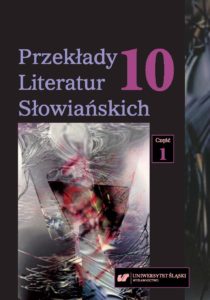
See entire issue:
2019
“Przekłady Literatur Słowiańskich”. Vol 9 No 3 (2019)
Bibliography of Translations of Slavic Literatures (2017) Rozwiń
Volume 9, Part 3, is another presentation in a series of bibliographies of translations of Bulgarian, Croatian, Czech, Macedonian, Serbian, Slovakian and Slovenian literatures into Polish, and of Polish literature into Bulgarian, Croatian, Czech, Macedonian, Serbian, Slovakian and Slovenian. This issue covers the year 2017. The bibliography, which for the past 10 years has been maintained by an international team of Slavists, is testimony to of the presence of Slavic literatures in Polish culture, and of Polish literature in the different countries Slavic countries. It gives us a look at translation products from the viewpoint of the changing cultural situation, and supplies knowledge about cross-cultural communication; about the reception of foreign (Slavic) literature; and about the mutual international contacts between Western and Southern Slavs, reflecting cultural and literary trends. The bibliographical compilations prepared for this issue are complemented by overview articles and commentaries about translations from the various Slavic literatures into Polish, and of Polish literature into other Slavic languages; the authors try to critically and analytically examine the work of translators while taking into account mutual literary contacts, the needs of the receiving culture, and the role of the translator in the act of translation. The articles and commentaries, which manifest differences and similarities between cultures, also define the general tendencies in the secondary horizon, as well as the area of interest of the literary life of the receiving culture (publishers, literary criticism, journals). The articles and bibliographic descriptions in this volume are targeted at literary and translation specialists including scholars, critics, Slavists, and students. A fundamental goal of Translation of Slavic Literatures is to continually broaden the scope of research and to build and sustain the knowledge of currently-appearing translations of Slavic literatures, which are to be understood as a significant area of intercultural communication.
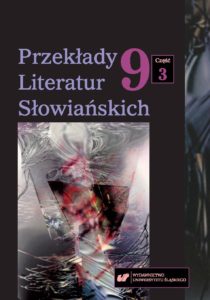
See entire issue:
“Przekłady Literatur Słowiańskich”. Vol 9 No 2 (2019)
Why do we translate? From agency to the reception of the translation Rozwiń
In Volume 9, Part 2, is devoted to the broadly understood problem of the purpose of translation and is a continuation of the previous issue. The collected works consider the problem of the agency of the main actors of translation (as translators and authors), the role of the various institutions in the process of translation, the question of the reception of the translated works, as well as the purpose of translation in the context of regionalism and multiculturalism. The issue has been divided into three problem parts. The first one is devoted to the institutional and receptive dimensions of translation (Anna Majkiewicz, Anita Gostomska, Regina Solová). The second part gathers articles devoted to two interpenetrating complexes of problems – the phenomena of regionalism and multiculturalism considered in the context of translation (Karolina Pospiszil, Hanna Makurat-Snuzik, Silvija Borovnik, Jakob Altmann). Finally, the third part of the presented volume is devoted to the author who influences the text of the translation in various ways: leaving traces of his presence and activity in the original text, formulating his own “translation theory”, and finally, becoming an interpreter of his own work (Wojciech Soliński, Joanna Derdowska, AleksanderGomola, Amela Ljevo-Ovčina). The authors of the articles collected in this issue are translation researchers from Poland and abroad, and the works deal with translations of both Slavonic and non-Slavonic literatures within various languages and ethnolects (i.e. English, Croatian, Czech, French, German, Polish, Slovenian, Silesian, Kashubian). Furthermore, issue 9.2 of the journal „Translations of Slavic Literatures” is dedicated to literary and translation theorists, as well as comparatists (scientists, critics, students).
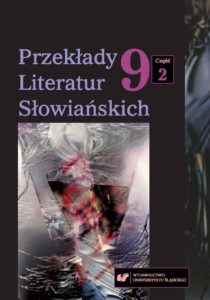
See entire issue:
2018
“Przekłady Literatur Słowiańskich”. Vol 9 No 1 (2018)
Why do we translate? The practice, theory and metatheory of translation Rozwiń
In Volume 9, Part 1, of the journal „Translations of Slavic Literatures” is devoted to the broadly understood problem of the purpose of translation. The collected works give various thematic and methodological answers to the question formulated in the title of the issue „Why do we translate”?, and they present practical, theoretical and metatheoretical dimension of the reflection on the translation. The authors of the articles collected in the issue are translation researchers from Poland and abroad, and the works deal with translations of both Slavonic and non-Slavonic literatures within various languages (English, Croatian, Czech, French, German, Polish, Russian, Slovak, Slovenian, Ukrainian, Italian). The issue has been divided into four problem parts. The first one presents translation as a ludic action, expressingit as a challenge, a play or a game (Bożena Tokarz, Olga Płaszczewska, Monika Gawlak). The second part is devoted to the translation experiments (Tamara Brzostowska-Tereszkiewicz, Aleksandra Małecka, Piotr Marecki, Katarzyna Majdzik, Joanna Warmuzińska-Rogóż), while the third presents the translators as the representatives of the original culture – the ambassadors and legislators according to J. Jarniewicz (Marta Skwara, Lucyna Spyrka, Marta Buczek, Dorota Żygadło-Czopnik, Tea Rogić Musa). In the last part, the problem of serial translations was presented (Maria Mocarz-Kleindienst, Andrij Saweneć, Leszek Małczak). The issue 9.1 of the journal „Translations of Slavic Literatures” is dedicated to the literary and translation theorists, as well as comparatists (scientists, critics, students).
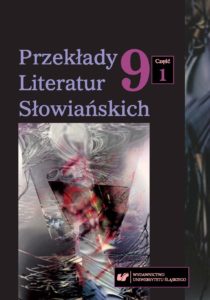
See entire issue:
2017
“Przekłady Literatur Słowiańskich”. Vol 8 No 2 (2017)
Bibliography of Translations of Slavic Literature (2016) Rozwiń
In Volume 8, Part 2, Bibliography of Translations of Slavic Literatures (2016), we compile translations from Bulgarian, Croatian, Czech, Macedonian, Serbian, Slovakian and Slovenian literatures into Polish, and of Polish literature into Bulgarian, Croatian, Czech, Macedonian, Serbian, Slovakian and Slovenian. Not all of the translations are here discussed in the form of commentary. We plan to present Bulgarian-Polish and Polish-Bulgarian, Czech-Polish and Polish-Czech, Macedonian-Polish, Serbian-Polish and Polish-Serbian, Slovenian-Polish and Polish-Slovenian for the years 2016-2017 in the next volume of the journal. Commentaries on the translations of Polish literature in Croatia and of Croatian literature in Poland consist of analyses of the two authors who at present are the most read and esteemed in each country: in Croatia, Witold Gombrowicz’s critique of Polishness – it would seem – is being discovered anew by the Croatian reader; on the Polish side, we examine Miljenko Jergović, who is without doubt the most commonly translated Croatian author in recent years (eight translations of his books appearing since 2010). The unique position and popularity of Miljenko Jergović reached new heights in 2016, when the publication of the Polish translation of Wiliamowski was also the novel’s world premiere. In Serbia and Macedonia, Polish literature enjoys undiminishing popularity, due in part to the generational change and to the emergence of a new generation of translators of Polish literature. Czech-Polish, Polish-Czech, Slovakian-Polish and Polish-Slovakian literary relations have traditionally been, and remain, robust. The commentary on translations of Polish literature in Slovakia takes the form of a monographic article on the translations of the work of one poet, Wisława Szymborska. The growth of the area of Polish translations of Czech and Slovakian literature shows that Polish publishers and translators (and these are also the criteria followed by publishers of Polish literature in southern and western Slavic countries) are mostly interested in contemporary authors, authors who have already attained literary success, and those whose prominent reputation in their native countries has been confirmed by literary prizes and a high degree of public recognition. The contributors of the commentaries published in this volume consider the institutional conditions of translating and attempt to identify the criteria that determine the choice of texts to be translated, recorded and some of them commented.
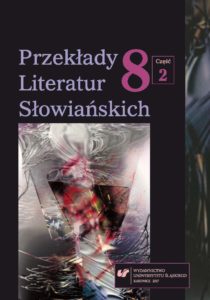
See entire issue:
“Przekłady Literatur Słowiańskich”. Vol 8 No 1 (2017)
Paratexts in the reception of translation Rozwiń
The Volume 8, Part 1, of the journal „Translation of Slavic Literatures”, is devoted to reflection on paratexts accompanying translations of Slavonic literatures, divided into five problem parts exposing another aspect of reflection on paratexts in the reception of translation, and concerns in particular literatures: American and Bosnian-Herzegovinian, Croatian, Czech, Polish, Serbian, Slovak, Slovenian, but also German. The articles in the volume concern the role and functions of paratexts (Izabela Lis-Wielgosz, Bożena Tokarz, Monika Gawlak), the active role of peritexts in intercultural dialogue and in the translation series (Katarzyna Wołek San Sebastian, Małgorzata Filipek, Amela Ljevo-Ovčina, Jakob Altmann), persuasive nature of introductions and their ideological dimension (Joanna Królak), ways of influencing of reviews and their current illocutionary force (Sylwia Sojda), footnotes and the information that they complement reading (Robert Grošelj, Weronika Woźnicka, Katarzyna Bednarska, Kamil Szafraniec). The last part of the volume concerns biographies and letters, treated as a kind of epitexts, which may not refer directly to translated works, but describe the context in which a literary work is created (Tea Rogić Musa, Leo Rafolt). All texts, except three, have been published in Polish. The article by Amela Ljevo-Ovčina is in Bosnian, by Robert Grošelj in Slovenian, and by Tea Rogić Musa in Croatian. The publication is addressed to researchers of Slavonic literature and cultures (including Polish), students, and all interested in knowledge about Slavic cultures.
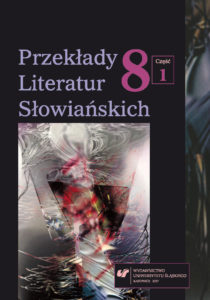
See entire issue:
2016
“Przekłady Literatur Słowiańskich”. Vol 7 No 2 (2016)
Bibliography of Translations of Slavic Literature (2015) Rozwiń
Volume 7, Part 2, compiles translations which appeared in 2015. As far as the criteria for the selection of literary texts are concerned, some changes in patterns of preference have been noted in comparison with previous years, more or less detectable within the individual linguistic-literary pairs (Czech-Polish, etc.) Hence, the contributors of commentaries have assumed different perspectives in their examination of the phenomena: the criterion of the choice of the original work; the aim of the receiving culture; the differences in the scope of choice within the translation pairs and the resulting mutual relationship between the native and foreign literature; and the role of publishing initiatives and of translators as bridges between the two participating cultures. This type of approach reveals differences in the needs of various Slavic cultures as well as large, mutually unknown cultural and literary areas; it also helps to determine efforts which need to be undertaken in order to eliminate the deficiencies in knowledge on both sides of the border, such as – among other things – the postulate that translations should be accompanied by copious commentaries or postscripts. So far, translators and publishers of Polish literature in Slovenia have shown great care in this respect. The approach taken by the contributors, that of the analysis of bibliographical data, is one out of a number of possible methodologies, and it inspires a number of other reflections in the area of discovering Slavic differences alongside similarities.
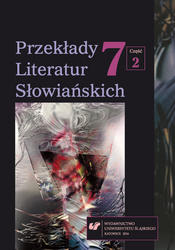
See entire issue:
“Przekłady Literatur Słowiańskich”. Vol 7 No 1 (2016)
Slavic translators and Slavic translation studies Rozwiń
In Volume 7, Part 1, is devoted to the reflections of scholars and translators on issues of translation among Polish, Slovakian, and Slovenian literatures in their relation to Croatian, Polish, Serbian and Slovenian literatures, as well as the literatures of the Austrian-Slovenian and German-Romanian borderlands. The content of the articles published in this volume makes up a theoretical and historical panorama, both as concerns translation studies as a discipline and concrete translating strategies and practices. This double perspective on translators’ individual solutions sheds better light on translators’ role as mediators (as well as, occasionally, initiators of styles and modes of thinking); their choices; and the functions and pragmatic values of translation. In this context, this volume focuses on the following problems: the dominance of norms in translation theory and/or practice as a factor determining the historical poetics of translation; the intertextuality of translation, i.e., its presence among other translated texts and in the context of a series; the knowledge of the original text among artistic and intellectual circles within the receiving culture; and the multiple aspects of the artistic translation as related to the native demand. The current volume also considers the preferences of the translator, who may act an “ambassador” or “legislator” of foreignness, enriching his or her own artistic competence and/or the target literature. The publication is addressed to scholars of Slavic literatures and cultures (including Polish); students; and whoever might be interested in broadening their knowledge of Slavic cultures.
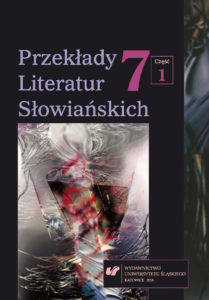
See entire issue:
2015
“Przekłady Literatur Słowiańskich”. Vol 6 No 2 (2015)
Bibliography of Translations of Slavic Literature (2014) Rozwiń
In Volume 6, Part 2, we compile translations, the number and selection of which, in terms of concrete authors and works, is determined by the cognitive and aesthetic needs of the receiving cultures and literatures. This volume covers the mutual relationships (chiefly as regards translation) between Bulgarian, Croatian, Czech, Macedonian, Serbian, Slovakian, Slovenian and Polish literatures. The differences and similarities which manifest themselves as a result of linguistic transference, and which pose challenges to translators, are treated as products of creative, albeit occasionally difficult, cultural relationships. They are conducive to new relations that broaden the cognitive, emotional, and aesthetic spectrum in the receiving cultures among circles of readers and writers. Their dissemination depends in great measure on literary institutions, on personal contacts between authors and translators, and on advertising, as well as the laws of the marketplace. The contributors of the commentaries herein attempt to look critically and analytically at translation from the perspective of the translator’s role in maintaining and developing mutual literary contacts; the needs of the receiving culture the translator represents; the participating institutions (publishers, circulations, journals and magazines, books, etc.); and the level of difficulty of the original work. The commentaries cover various areas over the course of the entire year, in an attempt to find a common denominator for the choices made and the translators engaged. They also focus on single works in an attempt to examine in the presence of a distinct translation issue. The juxtaposition of critical analysis with fact – supplied by the bibliography, along with commentary by specialists – allows us to see in these articles a web of complex, at times problematic relationships between the neighbourhood, transversion (and transgression), globalization, and glocalization of cultures. Slavic cultures, though linguistically related to each other, have been formed in distinct historical processes which involved coming into contact with non-Slavic cultures. In the course of these processes, linguistic affinity turns out to be illusory as it in fact represents practically different modes of experiencing, comprehending, and expressing reality. The aim of the short commentaries in this volume is not so much to explain cultural, personal and artistic complications as to inspire the reader to participate in the exploration of the varieties of Slavic otherness.
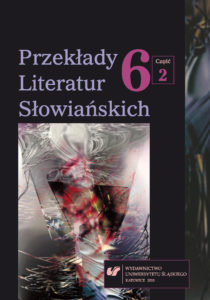
See entire issue:
“Przekłady Literatur Słowiańskich”. Vol 6 No 1 (2015)
Translator’s freedom towards imperative of the text Rozwiń
Volume 6, Part 1, is devoted to the issue of the questionable freedom of the translator’s decisions and the inability to sustain a prolonged discussion with the translated text. This is due to the fact that the translation exists as a “bound” text even if it becomes an active participant in the target culture. The translator’s freedom exists as a relative freedom of choice, in that a translator may transcend their native culture in the process of the discovery of a foreign literature and culture. The boundaries of the translator’s freedom are set by the following factors: the intention of the original text; cultural paradigms that inform manners of thinking and the mechanisms that enable the perception of the world and the understanding of its meaning; the constraints of, and tools provided by, linguistic systems; and the patronage of institutions that participate in literary communication. These boundaries delimit both the source culture and the target culture, which is why a translation cannot be examined exclusively from the perspective of the target culture. This kind of approach would deepen misunderstanding and oppose the will to reach mutual understanding. The translator, searching for affinities with what is native, is constrained by the categorical imperative of the original text. Even though, obviously, what we see depends on the subjective point of view of the perceiving subject (made up of their knowledge, sensitivity, preferred values, and beliefs), translations depend on the integrity of the translator, which is itself essentially related to the translator’s competence. The idea of integrity also relates to the text, which contains, as it were, the human person, the culture, the intention, and the artist. In fulfilling the duty of integrity, the translator is helped by their linguistic inventiveness in situations where there is no semantic equivalent, and in cases where only imperfect equivalents are available. Contributors to this volume address the above-mentioned issues in two thematic groupings: the boundaries of the translator’s freedom and the crossing of those boundaries; and the understanding of a translation as an imitation of a model, and thus as a “bound” text or a “second level text”. The articles have been arranged into two parts, entitled Boundaries and Imitation. In the first part are found articles which discuss types of boundaries: institutional, mental, and linguistic. The contributors offer a broad understanding of imitation: as artistic inspiration; as respect for the source text and culture from the perspective of the target culture; from a metatextual perspective, as the preservation of denotative and connotative information about the source culture or the third culture; and from the perspective of the receiver of the target culture. Aware of the manipulative function of patronage, poetics and psychosphere present in the receiving culture, the contributors examine translations without ignoring the original text.
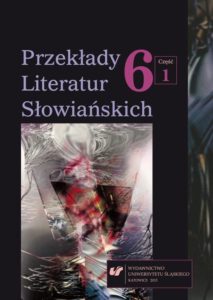
See entire issue:
2014
“Przekłady Literatur Słowiańskich”. Vol 5 No 2 (2014)
Bibliography of Translations of Slavic Literature (2013) Rozwiń
The Volume 5, Part 2 of journal compiles translations of Bulgarian, Croatian, Czech, Macedonian, Serbian, Slovakian, Slovenian literatures into Polish, and of Polish literature into these languages. This strategy makes it easier to survey the material, and to ensure that emerging content is processed without delay. Bibliographical reports provide useful information about the activity of the literary scene, of publishers, and of other institutions which promote Slavic literatures in Bulgaria, Croatia, the Czech Republic, Macedonia, Poland, Serbia, Slovakia and Slovenia. For this reason the bibliography has been augmented by commentaries in which the contributors describe the emerging patterns in the area of the reception of foreign (Slavic) literature by Slavs in the contexts of the individual cultures in question, as well as of the demand by the respective cultures for both otherness and for self-confirmation. Analysing the bibliography of translations, contributors deliver insights concerning the functions of the contexts of receiving cultures in the process of transferring original texts in their relations to the roles and values of these texts within the systems of source cultures. On the basis of the bibliography of translations, the conclusions arrived at in these areas chiefly concern translators’ choices. In this volume, commentators’ reflections have gone beyond the collected bibliographical entries and have covered a broader period, the years 2007-2013, analysing the content of Volume 4, Part 2. In subsequent volumes, commentaries will be concerned with the bibliographical material presented in the current volumes. The target readers of this publication are scholars of Slavic literatures and cultures (including Polish); students; and whoever might be interested in broadening their knowledge of Slavic cultures.
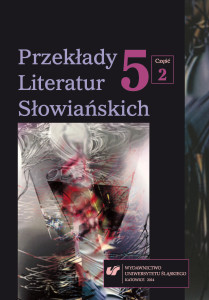
See entire issue:
“Przekłady Literatur Słowiańskich”. Vol 5 No 1 (2014)
Mutual relationships between translation and comparative studies Rozwiń
Volume 5, Part 1, is devoted to the overlapping of areas of translation, comparative studies, and their mutual relationships. Comparative studies and translation have become keywords for contemporary culture, where transversality is the dominant mechanism. Comparative studies thus constitutes the area for translation studies, as demonstrated by most of the authors whose contributions have been collected in this volume, which is entitled Mutual Relations Between Translation and Comparative Studies. In this context, contributors undertake such topics as the place of translation and translation studies in research (Marko Juvan, Bożena Tokarz), the methods of translation research (Martina Ožbot), intertextuality (Hanna Makurat), the hermeneutic attitude of the researcher and the translator (Bożena Tokarz, Robert Grošelj, Anita Srebnik, Anna Muszyńska); scientific translation studies (Tea Rogić Musa), the role of the comparative translator in concrete translations (Anna Muszyńska, Marta Buczek, Małgorzata Filipek, Monika Gawlak), translation on the borderline between cultures (Miran Košuta), translation vis-à-vis world literature (Marko Juvan), the cultural and linguistic translation triangle (Robert Grošelj), the refractivity of translation (Dorota Żygadło), dilemmas in comparative studies and translation (Leszek Małczak), translation as a genre of native literature (Magdalena Pytlak), and the problem of the phenomenon of hybrid texts, an explicit case of the removal of the original from the field of vision for pragmatic reasons (Przemysław Brom). All of the articles are devoted to the subject of the translation of literary texts except three. In two of those, the authors are concerned with non-literary texts: a bilingual dictionary (Anita Srebnik) and administrative texts of the European Union (Przemysław Brom). One article is devoted to translation practice, which shows that – regardless of the criticism of binarism and its questioning of the idea of equivalence – the translator looks for equivalence following moral and cognitive imperatives, fully aware of their gradability (Hanna Karpińska). Target readers of this publication are scholars of Slavic literatures and cultures (including Polish), students, and whoever might be interested in broadening their knowledge of Slavic cultures.
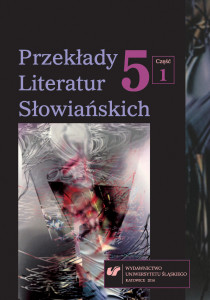
See entire issue:
“Przekłady Literatur Słowiańskich”. Vol 4 No 2 (2014)
Bibliography of Translations of Slavic Literature (2007-2012) Rozwiń
This volume provides a record of translations of Bulgarian, Croatian, Czech, Macedonian, Serbian, Slovak and Slovenian translation into Polish and Polish literature into the languages of the said literatures of the last five years.
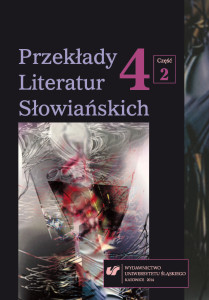
See entire issue:
2013
“Przekłady Literatur Słowiańskich”. Vol 4 No 1 (2013)
Stereotypes in artistic translation Rozwiń
Volume 4, Part 1, is devoted to the presence of translation stereotypes in artistic translation. Stereotypes, as well as reconstructions of stereotypes from the source culture, arise in a work as a consequence of translation, and testify to the fact that different cultures are perceived as separate monads in a multicultural world. The interpretation of the figure of the protagonist, the community with its culture, the foreign mindset, worldview, aesthetic, and emotional preferences all depend on the translator’s ability to identify stereotypes, which in turn enables successful intercultural communication conducive to the discovery of the other in ourselves and of ourselves in the other. Contributors to this volume examine translations of Bulgarian, Croatian, Czech, Macedonian, Serbian, Slovakian, Slovenian, and Polish literatures, seeking to identify the origins of the translation barriers they contain. It is the reader who passes a critical judgment on the presence of stereotypes in the original literary work and its translation, placing his or her interpretations of them into the receiving culture, which results in the creation of reception stereotypes. The social operation of reception stereotypes transcends literature thanks to its cognitive and persuasive functions. Articles published in this volume address various stereotypes and their translations. Contributors examine the translation of literary texts which contain stereotypes and/or examples of destereotypization in translations of Polish literature into Czech, Macedonian, Slovakian, and Slovenian, and of Bulgarian, Croatian, Czech, Serbian, and Slovakian literatures into Polish. The articles have been arranged by topic into three sections under the following headings: 1. The Role of Stereotypes in Culture (within which they are further differentiated as “gender stereotypes” and “the peripheries of culture”); 2. National Stereotypes; 3. Stereotypes of Reception of the typical varieties, and in particular those which concern valuation, leading to the subtitle, “In the Sphere of Valuation.” The target readers of this publication are scholars of Slavic literatures and cultures (including Polish), students, and whoever might be interested in broadening their knowledge of Slavic cultures.
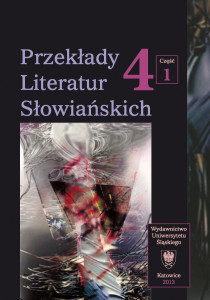
See entire issue:
“Przekłady Literatur Słowiańskich”. Vol 1 No 4 (2013)
Bibliography of Translations of Slavic Literature (1990-2006) Rozwiń
Volume 1, Part 4, is the final part of the first volume of part 1, entitled Translators’ Choices 1990-2006. It compiles translations from Czech, Slovakian and Macedonian literatures published in Poland, as well as of Polish literatures into Czech, Slovakian and Macedonian. At the end of the fourth and final part of Volume 1, the reader will find an authors’ index and a translators’ index with references to all the bibliographical parts of Volume 1, the goal being to provide assistance in the use of the bibliography and to facilitate inferences about translation choices. Volume 1 thus constitutes a finished whole which represents the mutual reception of Slavic literatures at the level of documented facts as well as in artistic, cultural, sociological, and psychological context and from the theoretical-critical perspective, which complements translation theory. Conclusions which can be drawn from the records of activity in translating and publishing in the various Slavic countries touch upon not only the presence of Polish literature in other Slavic cultures, but also the literatures of other nations in Polish culture and consciousness. Comparisons concerning the degrees of mutual knowledge among Slavs provide material for studies of intercultural communication between nations and communities stereotypically regarded as very similar and linked by bonds of familiarity and mutual understanding.
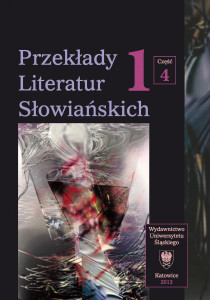
See entire issue:
2012
“Przekłady Literatur Słowiańskich”. Vol 3 No 1 (2012)
Cultural barriers in artistic translation Rozwiń
The title of Volume 3, Part 1, is to be understood as referring to cultural practices and habits, more or less permanently fixed in texts, which impede the re-expression of the original content and consequently also the understanding of foreignness by the secondary receiver. This situation causes the emergence of translation problems, both practical and theoretical, addressed in this volume by the contributors. Slavic cultures have accumulated a store of diverse and rich experiences through contact with foreign cultures despite the proximity of the languages. For this reason, publications treating of cultural barriers in artistic translation have been arranged not by the pairs of literatures, cultures, and languages that meet up in translation (as has been the case in former volumes), but by to the way in which the contributors bring into focus particular translatological issues related to the existence and the overcoming of extratextual difficulties in translation.
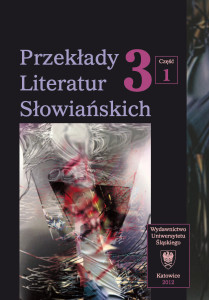
See entire issue:
“Przekłady Literatur Słowiańskich”. Vol 1 No 3 (2012)
Bibliography of Translations of Slavic Literature (1990-2006) Rozwiń
Volume 1, Part 3, is a continuation of Volume 1, Part 1; the bibliography, due to its size, has been divided into the three parts that comprise Volume 1. As such, Part 3 illustrates translators’ choices in the same years covered by Part 1, compiling translations from Bulgarian, Croatian, and Serbian literatures into Polish, as well as translations of Polish literature into these languages. Part 3 confirms the disproportion, revealed in the Part 1, between the presence of Slavic literatures in Poland and of Polish literature in other Slavic countries.
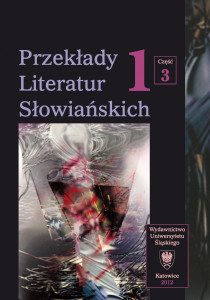
See entire issue:
2011
“Przekłady Literatur Słowiańskich”. Vol 2 No 1 (2011)
Forms of intercultural dialogue in artistic translation Rozwiń
Volume 2, Part 1, is devoted to forms of intercultural dialogue occurring in and mediated through translation, as demonstrated by material supplied by Bulgarian, Croatian, Czech, Macedonian, Serbian, Slovakian, and Slovenian literatures. Contributors to this volume describe and interpret various levels of dialogization (most often lexical) and make attempts to determine the conditions that enable, as well as prevent, entrance into dialogue, as well as the negative and reluctant attitude of translators towards that kind of dialogue.
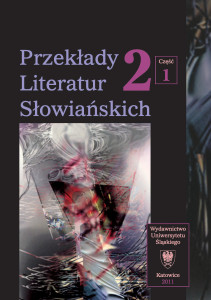
See entire issue:
2010
“Przekłady Literatur Słowiańskich”. Vol 1 No 2 (2010)
Bibliography of the Translations of Slavic Literature (1990-2006) Rozwiń
Volume 1, Part 2, is a continuation of Volume 1, Part 1: Translators’ Choices 1990-2006. This is a collective effort of a very different nature than the previous volume in that it testifies to translational facts which have occurred in different Slavic cultures. In preparing their contributions to this part of the bibliography, the authors have attempted to compile as many translations as possible. As translation scholars, literary historians, and theorists, the authors represent the source cultures of the literary texts listed here. This volume compiles and arranges a bibliography of translations of Polish literature into Bulgarian, Croatian, Czech, Macedonian, Serbian, Slovakian, Slovenian (and translations Slovenian literature into Czech), along with translations of literatures in the above-named Slavic languages into Polish. This publication is unprecedented in the area of translation studies due to its size and bi-directionality (in the case of the translations of Slovenian literature, the bibliography has compiled translations into both Polish and Czech). This volume is a continuation of the Issue 1 (1)/2009: Translation choices in the years 1990-2006 („Przekłady Literatur Słowiańskich”. T. 1. Cz. 1: Wybory translatorskie 1990-2006.) This collective work is of a completely different nature than the previous volume. It bears witness to translation facts which took place in various Slavic cultures. This volume is a systematized bibliography of the translations of Polish literature into the following languages: Bulgarian, Croatian, Czech, Macedonian, Serbian, Slovak, Slovenian (as well as translations of Slovenian literature into Czech) as well as literatures of the said Slavic languages into Polish.
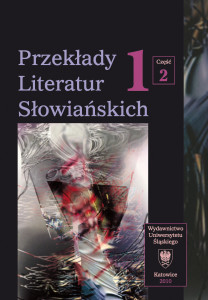
See entire issue:
2009
“Przekłady Literatur Słowiańskich”. Vol 1 No 1 (2009)
Translation choices in the years 1990-2006 Rozwiń
This collection inaugurates a series of publications under the general title “Translations of Slavic Literatures”, devoted to problems of artistic (literary) translation, seen from a range of perspectives: theoretical, historico-literary and historico-cultural. This volume, entitled Translators’ Choices 1990-2006, compiles studies of translations of Polish literature into Bulgarian, Croatian, Czech, Macedonian, Serbian, Slovakian, Slovenian, and of translations of literatures in these languages into Polish. Dialogue between Slavic literatures is viewed in this volume at a macro level (periods, authors), which creates an interesting perspective on the native and foreign cultures, as well as perceptions, cultural and mental limitations, and differences and similarities, both expected and unexpected, between Slavic literatures. The target readers of this volume are literary and translation scholars (researchers, critics, and students) as well as comparativists in the area of Slavic studies.
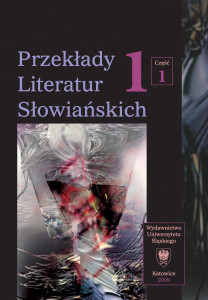
See entire issue:








